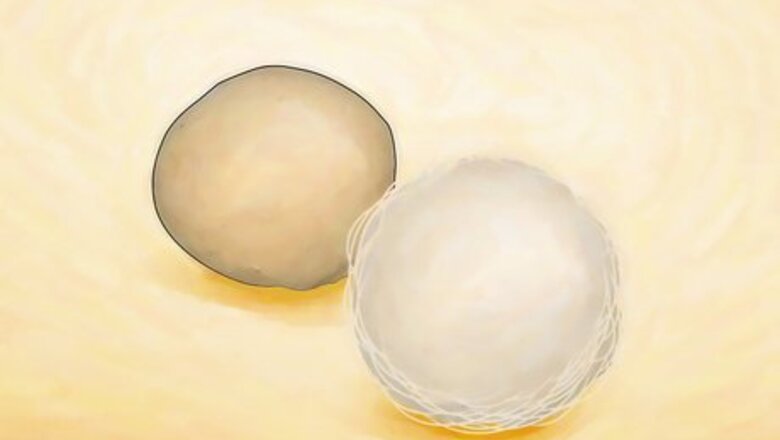
views
Examining the Egg Sac
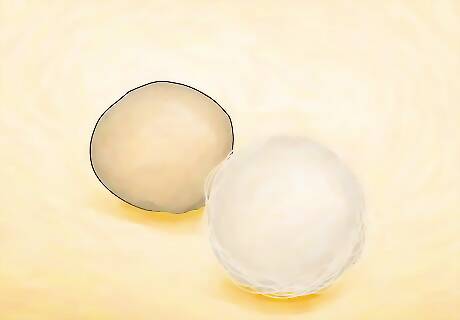
Notice the shape and texture. To determine if what you are looking at is a spider egg sac, consider the shape and texture. Spiders create egg sacs out of silk webbing, so the shape and texture may vary depending on the type of spider that created it. Some common spider egg sacs shapes include: round ball a disc with a rounded part in the middle squishy pillow fluffy mass of silk a ball with tiny spikes all over it
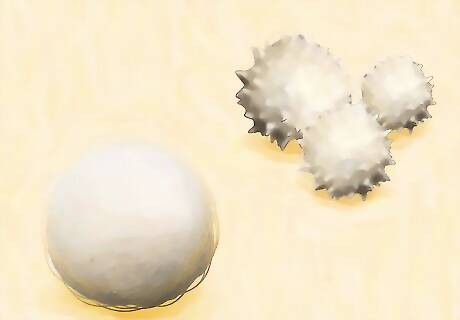
Observe the size of the sac. Spider egg sacs are small. They are often smaller than a quarter. Observe the size of the sac (or sacs) to determine if it might have been made by a spider. For example, if you find something that is the size of a soccer ball, then this is not likely to be a spider egg sac. However, if you find something the size of a dime, then there is a good chance that it is a spider egg sac. A spider egg sac will be about as big as the spider that made it. For example, if you have spiders in your area that are about the size of golf balls, then the spider egg sacs may be about the same size. Keep in mind that some spiders make just one egg sac, while others make several small ones.
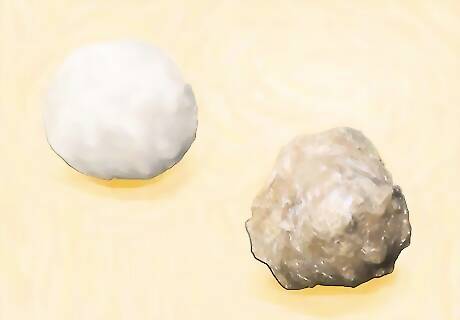
Look at the color. Most spiders create egg sacs that are white or off-white. However, this is not true of all egg sacs. Some eggs sacs are brown, yellow, or even yellowish-green. Observe the color to determine if what you are looking at might be a spider egg sac. For example, if the color of the sac is pink or black, then it is probably not a spider egg sac.
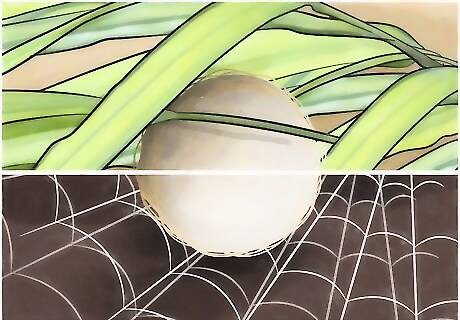
Pay attention to the location. While some spiders carry their egg sacs around with them, most spiders leave their egg sacs suspended in a web. If you have spotted something that you think might be a spider egg sac, check to see if it is suspended in a web or attached to a wall or other surface with some silk webbing. Some species of spider lay their eggs in sacs that are on the ground, so there might not always be visible webbing.
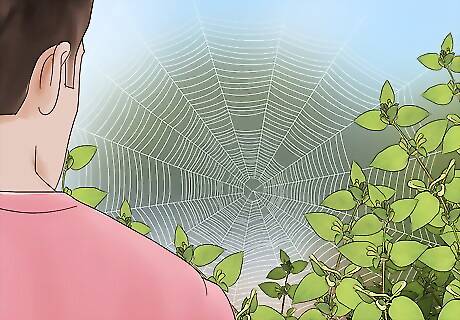
Check for baby spiders. The presence of baby spiders can also indicate that you have found an egg sac. Female spiders can lay hundreds of eggs in an egg sac, and when the eggs hatch, lots of tiny spiders may start crawling out of the sac. If you see any small, pale-colored spiders crawling around what you think might be an egg sac, then it probably is one.
Observing the Spider and Web
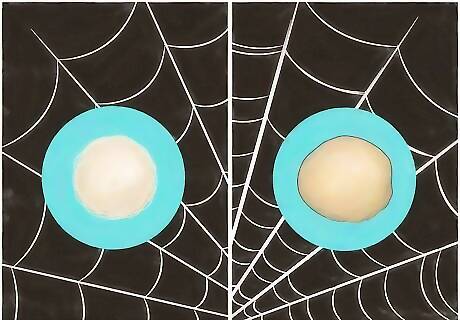
Note the pattern. Different kinds of spiders weave different kinds of webs. Observing the web will not be possible in all cases, as not all spiders leave their egg sacs in their webs. However, if you can’t tell what kind of spider you’re dealing with just by looking at the egg sac, then it is a good idea to check out the web. Common spider web patterns include: Orbs. Circular patterned webs. Cobwebs or tangle. Messy looking fluffy webs that often appear in the corners of ceilings. Funnels. Webs in the shape of a tunnel that are located in low-traffic areas. Sheet webs. Flat sheet-like or bowl-shaped webs. Wooly webs. Slightly sticky webs with an indistinct shape.

See where the web is located. Spiders make their homes in all sorts of places. You might find a web in a hole in a brick wall, the corner of a room, a tree, or a pile of dead leaves. Considering the location of a web will help you narrow down the possibilities for what type of spider’s eggs you are looking at. For example, tarantulas often live in burrows in the ground with a thin web covering the opening, disc web spiders often make their small grey webs on tree bark and brick walls, and comb footed spiders often make their webs in houseplants.

Get a good look if you can. Because many types of spider egg sacs look similar, it can be difficult to identify one without seeing the spider that left it. Some spiders lay their eggs and then depart, in which case you won’t see them around, but a number of them will stay close and protect the eggs until they hatch. If you do find the spider that made the egg sac you are trying to identify, getting a good look at the spider is your best chance at getting an accurate identification.
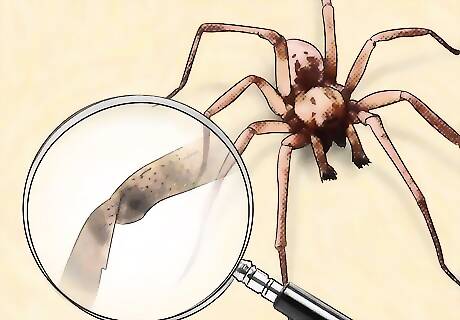
Pay attention to the coloration. Spiders come in many different colors and patterns. Some, like the distinctive Black and Yellow Garden Spider, are immediately recognizable, while others are more common looking. Try to notice the details. For example, if the spider is brown, what shade of brown is it? Does it have any other markings? Is it the same shade of brown over her entire body?
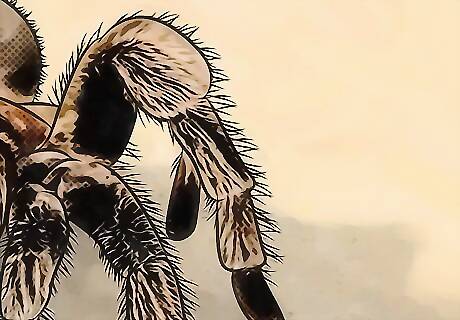
Notice the hair. All spiders are covered with small hairs, but this is not always noticeable. If you do see hairs on a spider, try to think of how you would describe them. For example, does this spider have hairs that are visible from a distance, like the Bold Jumping Spider, or are the hairs practically invisible even up close, like the hairs on a Brown Recluse?
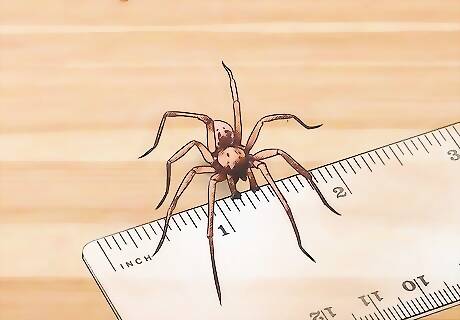
Gauge its size. Many people are afraid of spiders, so it can be easy to mentally exaggerate how large one is. However, getting an accurate way to describe the size of the spider may make it easier for you to identify it. Try to be objective. Is the spider the size of a pencil eraser? A quarter? A golf ball? Your fist? Most species of spiders have an average size range in inches or centimeters. Try to estimate its size in inches or centimeters to help you as you try to identify it.











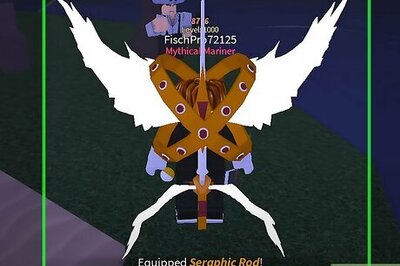



Comments
0 comment